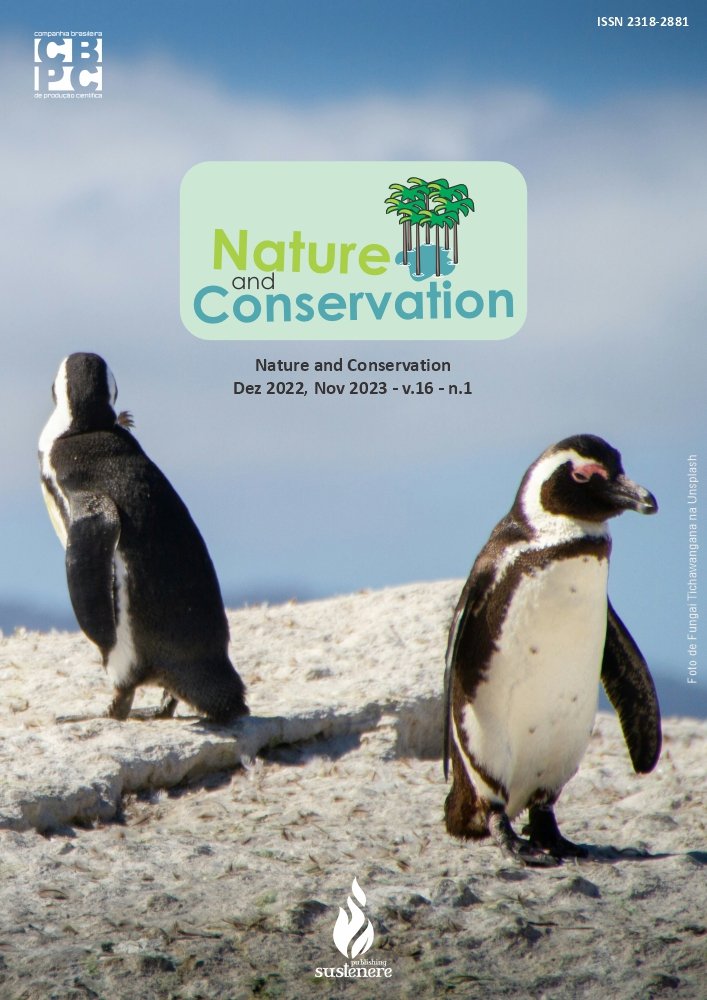Growth and accumulation of biomass from Luehea divaricata Mart. & Zucc. submitted to shadowing
DOI:
https://doi.org/10.6008/CBPC2179-6858.2022.003.0020Keywords:
Dry weight, Light, WeatherAbstract
Luehea divaricata Mart. & Zucc, belonging to the Malvaceae botanical family, is important for ecological services of recovery of altered areas, and for wood extraction. The objective of this work was to understand the effect of different levels of shading on the development of Luehea divaricata plants and which light environment provides better conditions for growth and development for the species. Four treatments were applied: 0% (full sun), 30%, 50% and 70% shading. It was determined: growth in height (h), diameter (d), number of leaves (NF), shoots (NB, branches), leaf area (AF), specific leaf area (AFE), dry mass of leaves (MSF), stem (MSC), root (MSR), total dry mass (MST), and root volume (Volr). The evaluations took place for a period of 11 months, determining the masses and Volr, at the end of the experiment. The most shaded treatment had the highest growth rates in h, while the full sun treatment had the highest growth in d. In NB the sun treatments and 30% stood out, while the 50 and 70% shading showed the lowest averages. AF performed better in the extreme treatments (full sun and the most shaded). For AFE, it was found that in the full sun treatment, the values were lower than those obtained in the shaded treatments. Plants in full sun had MSF higher than in shade treatments, while MSC was higher for treatments in full sun and 70%. There was a greater accumulation of total biomass in plants exposed to environments with greater luminosity, differing from the shaded treatments that showed the lowest averages. L. divaricata plants exposed to greater light tend to have more branches, and the opposite occurs in plants that grow in more shaded environments, which form fewer branches and invest their growth in height on the main stem. Thus, the recommendation of growing plants of this species depends on the objective for which the species will be destined. When destined for the recovery of altered areas, they can be cultivated in a greenhouse in environments with full sun; and in the field, direct planting is suggested, as it can withstand environments exposed to high light. While it is for wood production purposes, it is recommended to grow the species in a greenhouse in environments with 70% shading, and when transplanted to the field, it is suggested to intersperse with species that provide shading conditions for the establishment thereof.
Downloads
Downloads
Published
Issue
Section
License
Copyright (c) 2022 Ibero-American Journal of Environmental Sciences

This work is licensed under a Creative Commons Attribution-NonCommercial-NoDerivatives 4.0 International License.
The CBPC - Companhia Brasileira de Produção Científica (Brazil CNPJ: 11.221.422/0001-03) the material rights of the published works. The rights relate to the publication of the work anywhere in the world, including rights to renewals, expansions and dissemination of the contribution, as well as other subsidiary rights. All electronically published works may subsequently be published in printed collections under the coordination of this company and / or its partners. The authors preserve the copyright, but are not allowed to publish the contribution in another medium, printed or digital, in Portuguese or in translation.









